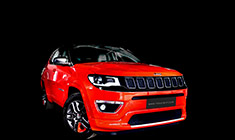News
Driving a Toyota Mirai hydrogen fuel cell car for a day!
The H2O button allows the driver to manually release distilled water from under the car, which is the only form of emissions from this vehicle.
BHPian mohitchalla recently shared this with other enthusiasts.
Living in Tokyo, owning a car is unnecessary and prohibitively expensive. Monthly parking fees and bi-yearly vehicle inspection can burn a hole in your pocket. Moreover, public transportation is so good that most people do not really need a car. But for the few days when a car is needed, I use my membership with one of the many car-sharing clubs. This time while selecting a car, I came across the Toyota Mirai and I was really tempted to try the hydrogen fuel cell vehicle, so I went ahead and booked it.
I arrived at the pick-up spot 10 minutes before the scheduled time. The car looked beautiful in the blue colour. Many have said that this generation of Mirai looks a lot like the Prius, but if you are a lover of automobiles, it is unmistakably a Mirai. The biggest giveaway is that the Mirai is much larger than the Prius. Given the shortage of labour in Japan and heavy reliance on automation, the pick-up was completely automated. I could unlock the car with my phone and get in.
The first thing one admires about the car is the quality of materials and the fit and finish. It may be a Toyota, but it is built by Lexus standards. I am not a big fan of leather seats but this car’s combination of fabric and leather was just amazing. I have never experienced any car seats that are so good! The roof upholstery and sun-visor material felt something like Alcantara, super smooth and soft to touch. The interior design and layout share a few elements with the Camry and the Corolla, but that is not a bad thing. Overall, it is extremely spacious and practical, quintessentially Japanese. The instrument cluster is placed in the centre, just above the infotainment system, which I am not a fan of. I believe the instrument cluster should be exclusively for the driver. The shift lever is a joystick type, which is seen in many other hybrid cars by Toyota and Honda.
The H2O button allows the driver to manually release distilled water from under the car, which is the only emission of this vehicle. If the user does not do it, the car will automatically keep releasing the accumulated water periodically.
As you start the car, there is no sound whatsoever, you just see a “READY” sign on the MID. The drive is very smooth and the NVH levels are almost non-existent. Ride and handling are optimised towards comfort. The steering is accurate but not engaging. The car rides on 235/55/R17 with a soft suspension setup, on top of that the roads in Japan are awesome, and I did not feel a single bump during the entire day. The driving position is commanding and provides pretty good visibility all-around. Performance is smooth and linear. It is not at all under-powered but I would not call it a quick car by any means.
Having said that, this alternate fuel powertrain was exciting nonetheless. The fuel cell and the chemical reaction itself is super quiet. The only way of knowing that it is happening is by looking at the animation on the MID. The powertrain charges the battery that in turn powers the electric motors driving the front wheels. There is also regenerative braking that helps in extending the range of the vehicle. Although I have heard from others that regenerative braking needs some getting used to for the driver, I could not really feel any difference from the conventional braking system. Overall, the brake bite is adequate and there is nothing to complain about.
A special mention must also go to the rear seats. Not pretending to be a bench for 3 people. It only seats 2 people comfortably in bucket seats, and that is how I prefer rear seats in cars to be. It is a common sight in MPVs and minivans but not so common in sedans.
There were other nice features like all four seats were heated (no cooling or ventilation), heated steering wheel, electronic rake and reach for the steering, memory seats, automated emergency braking, radar cruise control, blind-spot warning, memory seats, etc. Since these are not unique to the fuel cell experience and there is enough said about them on the internet, I would not go into the details.
In conclusion, I really enjoyed my experience with the Mirai. The next generation is more powerful and rear-wheel-drive. I will update this thread if I get a chance to drive that one. Meanwhile, you can have a look at some of the pictures of the Mirai covering other interesting details of the vehicle.
ETC (Electronic Toll Collection) where one can insert a card from which the toll can be paid. The card can be removed in case the car is being driven by someone else. I wish the Indian FasTag had adopted this technology. It allows more flexibility.
The triangle-shaped cover can be opened to access the power outlet. The fuel cell can be used to power a home. A full tank can power an average home for 5 days. This is useful during times of disasters like earthquakes and tsunamis, which are common in Japan. I also like the cover provided for the rear tailgate hinge, your luggage can never obstruct the hinge while closing the gate.
Another AC power outlet for shorter-term use and lower load appliances.
You get a driving score on the MID at the end of each drive. It shows driving time, distance and efficiency in KMs per KG of Hydrogen. The Japanese text says "Accelerator pressed gently. Try to do better next time."
Check out BHPian comments for more insights and information.

















